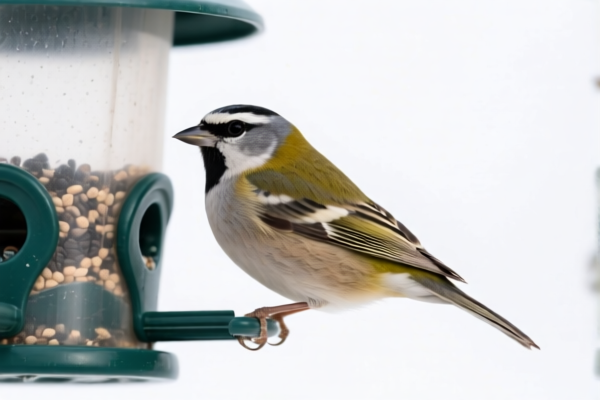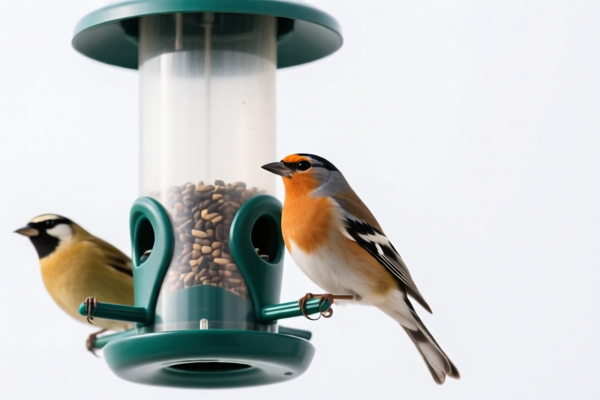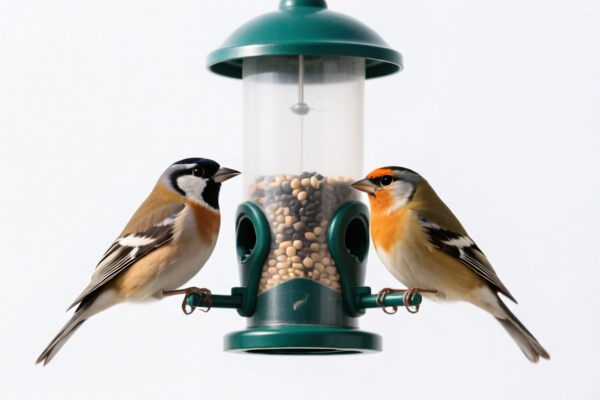| HS Code | Official Doc | Tariff Rate | Origin | Destination | Effective Date |
|---|---|---|---|---|---|
| 4304000000 | Doc | 61.5% | CN | US | 2025-05-12 |
| 9507902000 | Doc | 41.2% | CN | US | 2025-05-12 |
| 9507907000 | Doc | 46.5% | CN | US | 2025-05-12 |
| 9208900080 | Doc | 42.8% | CN | US | 2025-05-12 |
| 9208900040 | Doc | 42.8% | CN | US | 2025-05-12 |
| 9505906000 | Doc | 30.0% | CN | US | 2025-05-12 |
| 9505902000 | Doc | 30.0% | CN | US | 2025-05-12 |
| 7326908688 | Doc | 82.9% | CN | US | 2025-05-12 |
| 7326908605 | Doc | 82.9% | CN | US | 2025-05-12 |
| 7323997000 | Doc | 60.3% | CN | US | 2025-05-12 |
| 7323999080 | Doc | 83.4% | CN | US | 2025-05-12 |
| 3926901600 | Doc | 40.6% | CN | US | 2025-05-12 |
| 3923900080 | Doc | 58.0% | CN | US | 2025-05-12 |
| 3923500000 | Doc | 60.3% | CN | US | 2025-05-12 |




Hanging Bird Feeder
A hanging bird feeder is a device designed to hold birdseed and suspend it in the air, providing a convenient feeding station for wild birds. They are a popular method for attracting birds to gardens, balconies, and other outdoor spaces.
Material
Hanging bird feeders are constructed from a variety of materials, each with its own advantages and disadvantages:
- Plastic: Lightweight, inexpensive, and easy to clean. However, plastic can become brittle in cold weather and may degrade with prolonged UV exposure.
- Metal: Durable and often squirrel-resistant, especially when constructed from steel or wrought iron. Metal feeders can heat up in direct sunlight, potentially affecting seed quality. Coating with rust-resistant materials is common.
- Wood: Offers a natural aesthetic and provides good insulation. Wood feeders require more maintenance to prevent rot and can be susceptible to damage from weather and pests. Cedar is a commonly used wood due to its natural resistance to decay.
- Glass: Primarily used for hummingbird feeders, allowing for easy monitoring of nectar levels. Glass can be fragile.
- Combination Materials: Many feeders combine materials like metal cages with plastic or glass seed reservoirs for a balance of durability, visibility, and cost-effectiveness.
Purpose
The primary purpose of a hanging bird feeder is to supplement the natural food sources available to birds, particularly during times of scarcity such as winter or when natural food is buried under snow. They also:
- Attract Birds: Provide a focal point for birdwatching and enjoyment of avian life.
- Support Bird Populations: Offer a reliable food source, contributing to the health and survival of local bird species.
- Educational Opportunities: Allow for close observation of bird behavior and identification.
Function
Hanging bird feeders function by:
- Seed Storage: Holding a quantity of birdseed, protected from the elements to some degree.
- Seed Dispensing: Providing access to seed for birds through various mechanisms (holes, trays, perches).
- Suspension: Allowing the feeder to be hung from branches, hooks, or other supports, keeping it elevated and generally safe from ground predators.
- Protection (Variable): Some feeders are designed with features to deter squirrels and larger birds.
Usage Scenarios
- Gardens: Placed amongst trees and shrubs to attract birds to landscaped areas.
- Balconies/Patios: Providing a bird feeding station in urban environments.
- Parks/Nature Reserves: Supplementing natural food sources in managed areas.
- Backyards: A common location for attracting birds for observation and enjoyment.
Common Types
- Tube Feeders: Cylindrical feeders with multiple feeding ports, often used for small birds like finches and chickadees.
- Hopper Feeders: Feature a large seed reservoir and a tray at the bottom, accommodating a larger number of birds.
- Platform Feeders: Simple trays with raised edges, suitable for a wide variety of bird species. Often have mesh bottoms for drainage.
- Suet Feeders: Designed to hold suet cakes, a high-energy food source particularly popular in winter. Often cage-like to prevent larger birds from dominating.
- Hummingbird Feeders: Feature small feeding ports designed for hummingbirds' long beaks and tongues, filled with sugar water (nectar).
- Nyjer Feeders: Specifically designed for Nyjer (thistle) seed, with small feeding ports to accommodate small bills.
- Squirrel-Resistant Feeders: Employ various mechanisms (cages, weight-activated ports) to prevent squirrels from accessing the seed.
Based on the provided information, a hanging bird feeder can be classified under several HS codes, depending on its material and specific components. Here's a breakdown:
- 7326.90.86.88: This HS code covers “Other articles of iron or steel: Other: Other: Other: Other”. This could apply if the bird feeder is primarily constructed of iron or steel. The total tax rate is 82.9%, with a basic tariff of 2.9% and an additional tariff of 25.0%, plus a 25% additional tariff on steel/aluminum products effective April 2, 2025.
- 7326.90.86.05: This HS code covers “Other articles of iron or steel: Other: Other: Other: Rods for electrical grounding (potentially if the hanging mechanism involves rods)”. If the hanging mechanism utilizes rods, this code may be applicable. The total tax rate is 82.9%, with a basic tariff of 2.9% and an additional tariff of 25.0%, plus a 25% additional tariff on steel/aluminum products effective April 2, 2025.
- 3923.90.00.80: This HS code covers “Articles for the conveyance or packing of goods, of plastics; stoppers, lids, caps and other closures, of plastics: Other Other”. If the bird feeder is made of plastic, this code could apply. The total tax rate is 58.0%, with a basic tariff of 3.0% and an additional tariff of 25.0%, plus a 30% additional tariff effective April 2, 2025.
- 9505.90.60.00: This HS code covers “Festive, carnival or other entertainment articles, including magic tricks and practical joke articles; parts and accessories thereof: Other: Other”. If the bird feeder is considered an entertainment article, this code may be applicable. The total tax rate is 30.0%, with a 30% additional tariff effective April 2, 2025.
According to the provided reference material, the HS code options related to 'hanging bird feeder' are limited, with only the following 4 found.
Regarding HS codes 7326.90.86.88 and 7326.90.86.05, please note the need to verify the material (steel or aluminum) and may require additional documentation related to the composition of the metal.
Customer Reviews
No reviews yet.